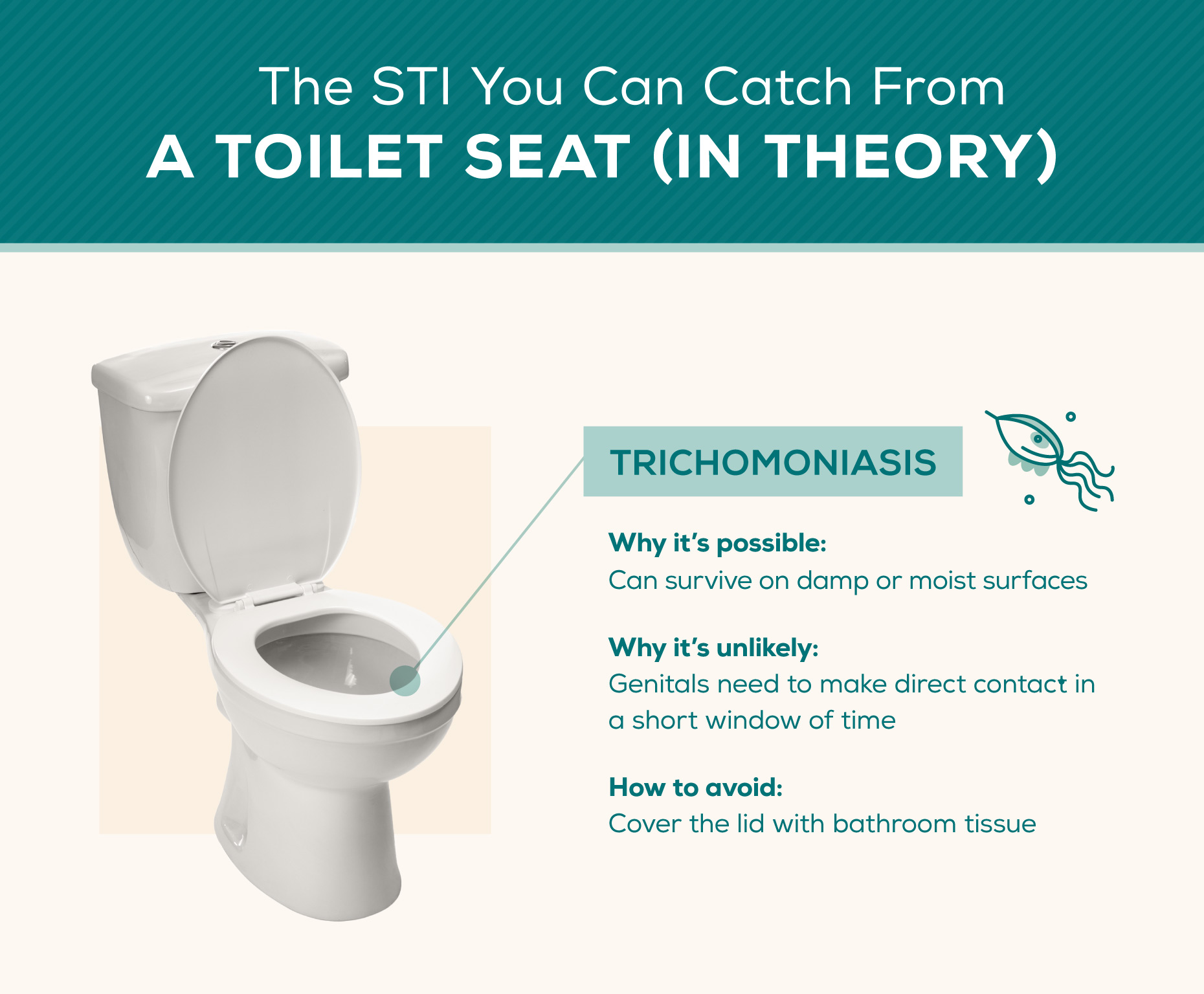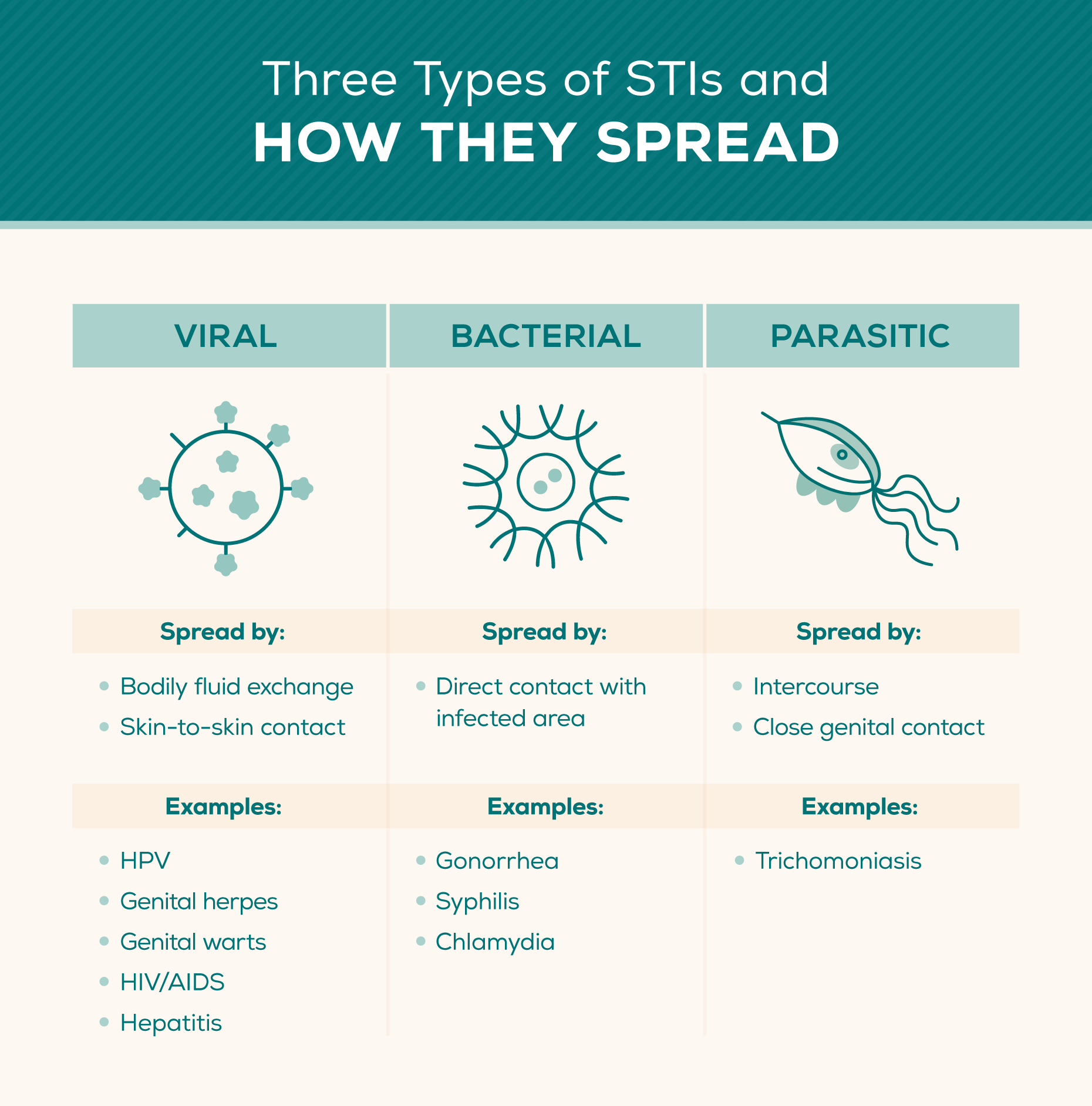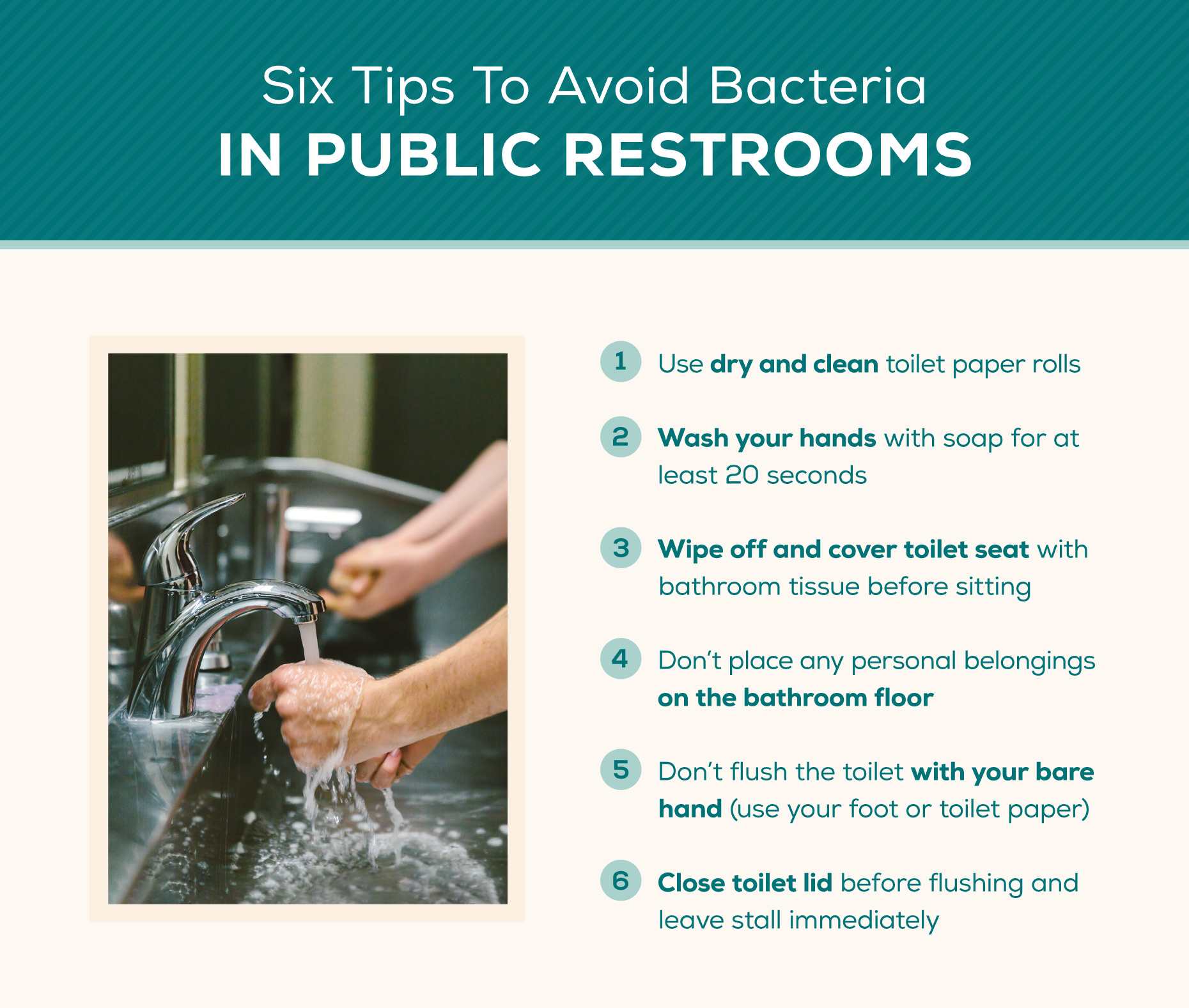
Can You Get an STD or STI From a Toilet Seat? Here’s What To Know
Medically reviewed on June 7, 2022 by Jordan Stachel, M.S., RDN, CPT. To give you technically accurate, evidence-based information, content published on the Everlywell blog is reviewed by credentialed professionals with expertise in medical and bioscience fields.
Table of contents
- What Can You Catch From a Toilet Seat?
- How Do STIs Actually Spread?
- How To Avoid Bacteria in Public Restrooms
- How To Prevent STIs
- Stay Safe With Everlywell
Do you remember the worst public restroom you’ve ever visited? While bacteria, parasites, and viruses can thrive on bathroom surfaces, can you get an STD from a toilet seat?
Technically, yes. But it's extremely unlikely. The World Health Organization estimates that over 1 million sexually transmitted infections (STIs) are acquired daily, but they are predominantly spread through intimate activities like vaginal, anal, or oral sex, and close skin-to-skin contact.
Although we can’t make every public restroom in the world sparkling clean, we can clear up some of the myths about STIs. If you want to put your mind at ease the next time you need to sit on a public toilet, you’ve come to the right place. Read on to learn more about how STIs are spread, the best ways to protect yourself from bacteria in public restrooms, and how to prevent STIs.
What STIs Can You Catch From a Toilet Seat?

Most of the organisms that cause STIs can’t survive for long outside of the human body, but there is one you can theoretically catch from a toilet seat: trichomoniasis.
Before we explain how that’s possible, we should reiterate that you are much more likely to catch other types of viruses, germs, and bacteria from toilets and surfaces in public bathrooms rather than an STI.
What is trichomoniasis?
Also referred to as trich, trichomoniasis is a sexually transmitted parasite. Trich is often unnoticeable, but its main symptom is vaginitis (vaginal discharge) and penile discharge.
How is trichomoniasis spread?
Intercourse is the most common cause of transmission, but according to the Indian Journal of Sexually Transmitted Diseases and AIDS and the Los Angeles County Department of Public Health, trich parasites can survive for several hours on damp or moist surfaces including towels and toilet seats.
Can you catch trichomoniasis from a toilet seat?
Yes, because trichomoniasis can survive on a toilet seat for a short time. However, your genital area would need to come into direct contact with the parasite within a few hours of the STI being transferred to the toilet seat.
So, while possible, it’s highly unlikely. You’re more likely to get trich from being sexually active.
How Do STIs Actually Spread?

There are three different types of STIs:
- Viral
- Bacterial
- Parasitic
Germs that cause STIs live in semen, blood, vaginal fluids, or saliva. As a result, STIs are spread mainly through oral, vaginal, or anal sex, although some can spread through sexual skin-to-skin contact.
The Office on Women’s Health also notes that in some instances, an infected mother can also pass along an STI to her child during vaginal childbirth.
How do viral STIs spread?
HPV, genital herpes, and HIV are examples of viral STIs. These STIs spread when bodily fluids are exchanged. This happens most often during unprotected sex with a partner carrying the virus. Genital herpes is an exception that can be spread through skin-to-skin contact.
Aside from intercourse, viral STIs can spread when blood from an infected person enters an open wound of another person (such as during a blood transfusion, or sharing a needle for IV drug use).
How do bacterial STIs spread?
Gonorrhea, syphilis, and chlamydia are examples of bacterial STIs. These STIs spread when people encounter the infectious bacteria, which mainly happens during unprotected sex.
Syphilis can spread by touching the blood or sores of an infected person (which are usually around the mouth or genital areas).
Chlamydia can be spread through skin-to-skin contact with an infected person’s genitals or passed on to babies during vaginal delivery.
How do parasitic STIs spread?
Parasitic STIs like trichomoniasis generally only spread during unprotected intercourse. During sex, the parasite spreads from the genitals of one partner to another. According to the Centers for Disease Control and Prevention (CDC), it’s uncommon for the parasite to infect other body parts like the mouth or anus.
Most people who have trich don’t exhibit any symptoms, so they’re often unaware that they carry the infection. We recommend that sexually active men and women get tested on a regular basis to know for sure.
Based on how STIs spread, you shouldn’t be too concerned about getting an STI in a public restroom. However, bathrooms can be havens for other viruses, germs, and bacteria that you want to avoid. Here’s how to avoid these germs.
How To Avoid Bacteria in Public Restrooms

Whenever you need to use a public restroom, here are a few helpful hygiene practices:
- Wash your hands thoroughly: The CDC recommends wetting your hands first and lathering with soap for at least 20 seconds.
- Wipe off the toilet seat and cover it with toilet paper or a disposable seat cover: Some public restrooms will have seat cover dispensers available. Otherwise, dry toilet paper will create an effective barrier.
- Make sure the toilet paper roll is dry and clean: If toilet paper is wet or dirty, check if another stall is available.
- Don’t set personal belongings on the floor: Some public bathroom stalls will have hangers. Otherwise, keep your personal belongings on your lap or in your hands.
- Flush with your foot or a piece of toilet paper if possible: Avoid touching the flushing mechanism with your bare hand.
- Close the lid before flushing and/or leave the stall immediately after flushing: Germs and bacteria leave the toilet upon flushing, so you’ll want to clear the area or keep them confined.
Now that you know you’re safe from STIs in public restrooms and how to protect yourself from the more common germs you’ll find in them, let’s discuss what you can do to prevent catching or spreading STIs.
How To Prevent STIs
As their name implies, sexually transmitted infections are spread during sex (and almost never from sitting on a public toilet). STI transmission is a risk any time you engage in sexual activity, but there are reasonable steps you can take to make sure you’re as safe as possible.
Use Barrier Protection
Latex condoms effectively reduce the risk of STIs by blocking contact with bodily fluids that carry sexually transmitted infections.
Condoms can’t guarantee 100 percent protection, but when used consistently and correctly, they are 98 percent effective at protecting against most STIs like chlamydia and gonorrhea, and are highly effective at preventing HIV transmission.
Get Tested for STIs Regularly
STIs don’t always present obvious symptoms. Routine STI testing can help you stay informed about your health so you can seek treatment if needed and minimize risks to your long-term health.
Regular STI testing will also protect your potential partners, as you’ll be able to have informed and honest conversations about your health.
You can quickly test yourself from the privacy of your home with a convenient at-home STD Test for men and home STD Test for women. If test results are abnormal, you can also connect with our independent physician network, at no additional cost, to discuss your particular case and possible treatments.
Get Vaccinated for HPV and Hep B
Some STIs are incurable once contracted, including HIV, herpes, hepatitis B, and human papillomavirus (HPV). Fortunately, there are preventative vaccines available for hep B and HPV.
The hepatitis B vaccine is available and recommended by the CDC for all age groups. Although commonly administered among newborns today, if you were born before 1991, you may not have received it yet. Speak with your healthcare provider to see if you’re eligible.
HPV is the most commonly transmitted STI, which 79 million people in the United States currently have and 80 percent of sexually active people will contract at some point (an HPV test can help you learn your status).
One of the best things you can do to prevent certain strains of HPV is to get an HPV vaccine. Everyone from the ages of 9 to 45 can receive the vaccine, which can protect against the types of HPV that most commonly increase the risk of cancer and genital warts.
Stay Safe With Everlywell
Hopefully this guide has helped you understand that you’re at very low risk of getting an STI from a toilet seat. To learn more about how you can stay safe as a sexually active person, here are some other recommended materials on STIs for all ages:
- STDs in Older Adults
- STD Rates by State
- Questions to Ask Your Gynecologist
- STI Statistics for College Students
- STD Testing Process
- Dating with STDs
Article Sources
- Sexually transmitted infections (STIs). World Health Organization. URL. Accessed May 8, 2022.
- Trichomoniasis: Is it always sexually transmitted? Indian Journal of Sexually Transmitted Diseases and AIDS. URL. Accessed May 8, 2022.
- Trichomoniasis Overview. Los Angeles County Department of Public Health. URL. Accessed May 19, 2022.
- Sexually transmitted infections, pregnancy, and breastfeeding. Office of Women’s Health. URL. Accessed May 15, 2022.
- Trichomoniasis – CDC Fact Sheet. Centers for Disease Control and Prevention. URL. Accessed May 8, 2022.
- Frequent Questions About Hand Hygiene. Centers for Disease Control and Prevention. URL. Accessed May, 8 2022.
- Hepatitis B Vaccination. Centers for Disease Control and Prevention. URL. Accessed May 8, 2022.